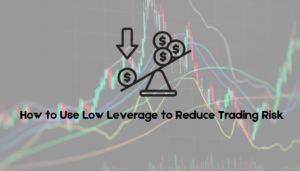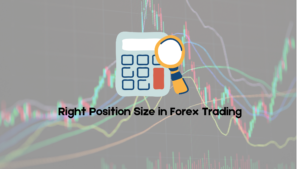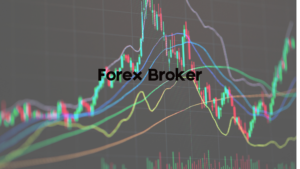Leverage in forex trading is the use of borrowed capital to increase the potential return of an investment. By using leverage, traders can control larger positions in the market with a smaller amount of actual capital. This means that with a small deposit, known as margin, a trader can open a position that is many times larger than their margin. For instance, with a leverage ratio of 1:100, a trader can control $100,000 worth of currency with just $1,000 in their account.
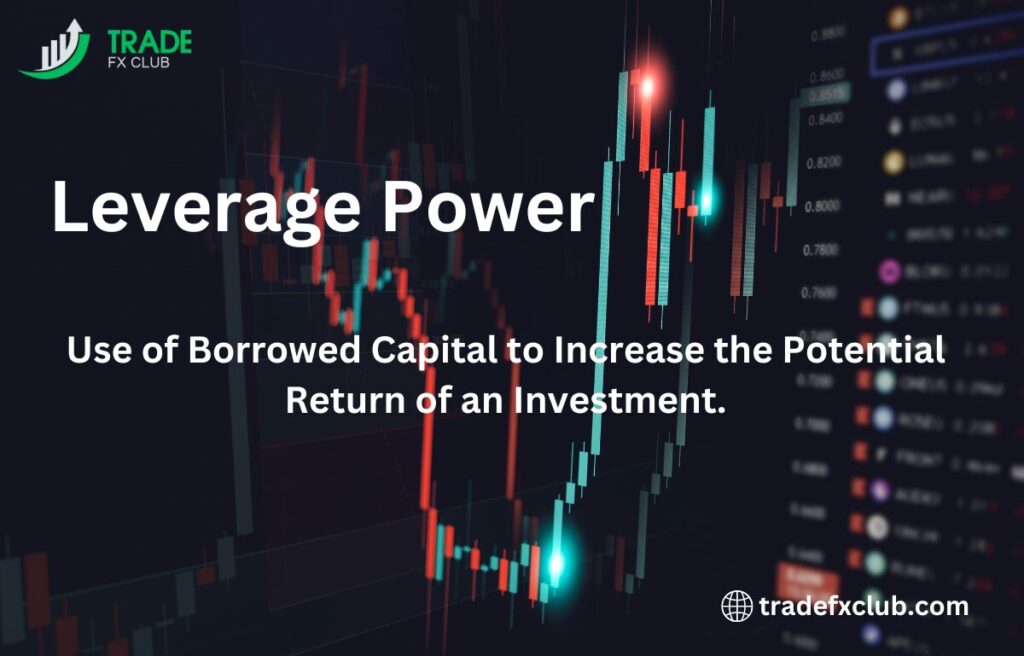
The concept of leverage is central to forex trading because it allows for greater market exposure and the potential for higher profits. However, it’s important to understand that while leverage can amplify gains, it can also magnify losses. Traders must manage leverage carefully to avoid significant losses, which can quickly exceed their initial investment if the market moves against their position.
How Does Leverage Work in the Forex Market?
It works in the forex market by enabling traders to use borrowed funds from their broker to trade larger positions than their own capital would normally allow. When a trader opens a leveraged position, the broker lends them the additional capital needed to increase the trade size. The amount of leverage available to traders varies depending on the broker and regulatory constraints, but it typically ranges from 1:10 to as high as 1:400.
For example, if a trader has $1,000 in their account and uses 1:100 leverage, they can control a position worth $100,000. If the currency pair they are trading moves in their favor, their profits are magnified. Conversely, if the market moves against them, their losses are equally magnified. Brokers require traders to maintain a certain amount of equity in their account, known as margin, to cover potential losses. If the account equity falls below this level, a margin call occurs, and the trader must deposit additional funds or close positions to maintain their leveraged trades.
Why is Leverage Considered a Double-Edged Sword in Forex?
It is considered a double-edged sword in forex because it can significantly amplify both profits and losses. On one hand, leverage allows traders to potentially make substantial profits from relatively small market movements. This is because the leverage magnifies the trader’s exposure to the market, enabling them to earn higher returns on their initial capital.
On the other hand, It also increases the risk of significant losses. Small adverse price movements can quickly lead to large losses, which may exceed the trader’s initial investment. This is particularly dangerous for inexperienced traders who may not fully understand the risks involved or who may over-leverage their positions. Effective risk management strategies, such as using stop-loss orders and limiting the amount of leverage used, are essential to mitigate these risks and protect the trader’s capital.
What are Common Leverage Ratios in Forex Trading?
In forex trading, leverage ratios are typically expressed in the form of a ratio, such as 50:1 or 100:1, indicating how much capital a trader can control relative to the amount deposited in their trading account. The most common leverage ratios offered by brokers range from 50:1 to 400:1. For example, with a 50:1 leverage ratio, a trader can control $50 for every $1 of their own money. Similarly, a 100:1 leverage ratio means controlling $100 for every $1 deposited .
Different regions have varying regulations on the maximum leverage ratios allowed. In the U.S., leverage is typically capped at 50:1 due to regulatory constraints, while in other jurisdictions like Switzerland, it can go up to 400:1. Higher leverage ratios, although offering the potential for significant profits, also increase the risk of substantial losses, making it crucial for traders to choose a leverage level that aligns with their risk tolerance and trading strategy).
How to Calculate Forex Leverage and Margin?
Calculating leverage and margin in forex trading is essential for managing risk effectively. Leverage is calculated using the formula:
Leverage=Total Value of Transaction Trading Capital{Leverage} = {Total Value of Transaction}{Trading Capital}Leverage=Trading Capital Total Value of Transaction
For instance, if a trader has $10,000 in their account and opens a $100,000 position, the leverage used is 10:1 ($100,000 / $10,000). Margin, on the other hand, represents the amount of capital required to open and maintain a leveraged position, typically expressed as a percentage of the full position size. For example, with a 50:1 leverage ratio, the margin requirement is 2% of the total position size.
To calculate margin-based leverage, divide the total transaction value by the margin required. For example, if you need to deposit 1% of the transaction value as margin for a $100,000 trade, the margin required would be $1,000, resulting in a leverage ratio of 100:1 ($100,000 / $1,000). This calculation helps traders understand their exposure and manage their positions accordingly.
What is the Relationship Between Leverage and Margin?
Leverage and margin are interrelated concepts in forex trading, often inversely proportional. Leverage allows traders to control a large position with a relatively small amount of capital, while margin is the collateral required to maintain that leveraged position. Essentially, higher leverage ratios result in lower margin requirements. For example, a leverage ratio of 100:1 means that the trader needs to maintain a margin of 1% of the total position size, whereas a leverage ratio of 50:1 requires a 2% margin.
This relationship means that as leverage increases, the margin required decreases, allowing traders to control larger positions with less capital. However, this also means that the risk of significant losses increases, as even small market movements can result in substantial impacts on the trader’s equity. Therefore, understanding and balancing leverage and margin is crucial for effective risk management in forex trading.
How Much Leverage Should You Use When Trading Forex?
The amount of leverage you should use in forex trading largely depends on your trading strategy, risk tolerance, and experience level. For beginners, it is generally recommended to start with lower leverage, such as 1:10 or even 1:1, to minimize risk while learning the dynamics of forex trading. Starting with lower leverage helps mitigate the impact of adverse market movements and allows for better risk management.
As you gain more experience and develop a robust trading strategy, you might consider increasing your leverage. However, even experienced traders are advised to be cautious with high leverage, often not exceeding 1:50. The key is to balance potential gains with the ability to manage risk effectively. High leverage can amplify profits but also magnifies losses, making it crucial to use leverage judiciously.
What are the Risks Associated with High Leverage in Forex?
High leverage in forex trading can significantly amplify both gains and losses. While it allows traders to control larger positions with a smaller amount of capital, it also increases the potential for substantial losses. One of the primary risks is the increased likelihood of margin calls, where the broker demands additional funds to cover potential losses. If these margin calls cannot be met, the broker may close positions, resulting in realized losses.
Additionally, high leverage can lead to severe financial stress and emotional decision-making. Traders may feel pressured to recover losses quickly, leading to impulsive and often detrimental trading decisions. The volatility of the forex market means that even small price movements can have a significant impact on a highly leveraged account, potentially wiping out the trader’s capital in a short period.
How to Manage Risk When Using Leverage in Forex?
Effective risk management is crucial when trading with leverage. One of the most fundamental strategies is to use stop-loss orders, which automatically close a position when it reaches a certain loss threshold. This helps limit potential losses and protect your capital. Additionally, setting take-profit levels can help secure gains and prevent market reversals from eroding profits .
Position sizing is another important aspect of risk management. Traders should determine the appropriate size of their trades based on their risk tolerance and the leverage being used. A common rule of thumb is to risk no more than 1-3% of your total trading capital on a single trade. This approach ensures that even if a trade goes against you, it won’t devastate your account.
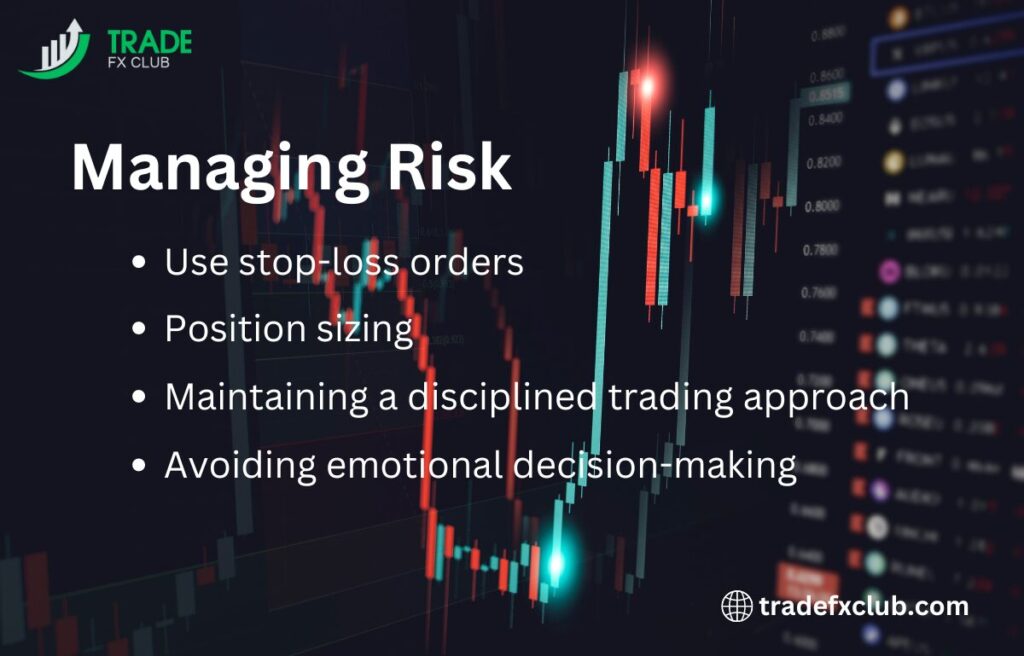
Lastly, maintaining a disciplined trading approach and avoiding emotional decision-making is vital. Traders should stick to their predefined trading plans and risk management rules, even when faced with market volatility. Regularly reviewing and adjusting your strategies based on market conditions and personal performance can also help improve risk management over time.
What are Margin Calls and How Do They Work?
A margin call in forex trading is a broker’s demand for additional funds or securities to bring a margin account up to the minimum required level. This occurs when the equity in a trader’s account falls below the broker’s required margin level due to losses incurred from open positions. Essentially, it’s a mechanism to protect both the trader and the broker from potential losses.
When a trader uses leverage, they are borrowing money from the broker to control a larger position than their actual capital would allow. The broker requires a certain amount of this capital, known as the margin, to be maintained as collateral. If the value of the trader’s positions declines and the account equity drops below the required margin level, a margin call is triggered. The trader must then either deposit additional funds to cover the shortfall or close some of their positions to free up margin. Failure to meet the margin call can result in the broker liquidating the trader’s positions, often at a loss.
How to Set Up Stop-Loss and Take-Profit Levels with Leverage?
Setting up stop-loss and take-profit levels is crucial when trading with leverage to manage risk and protect profits. A stop-loss order automatically closes a position when it reaches a specified loss level, preventing further losses. Conversely, a take-profit order automatically closes a position when it reaches a specified profit level, securing gains before the market can reverse.
To set these levels effectively, traders should analyze market trends, support and resistance levels, and volatility. For a stop-loss, it’s recommended to place it at a level where, if hit, it indicates the initial trade idea was wrong, thus limiting losses. For instance, if a trader buys EUR/USD at 1.1000, they might set a stop-loss at 1.0950, risking 50 pips. For take-profit, it’s wise to set it at a level where profits are realized before the market can reverse significantly. Using the same example, a take-profit might be set at 1.1100, aiming for a 100-pip gain.
Traders should regularly review and adjust these levels based on market conditions and their trading strategy. It’s also beneficial to use trailing stop-losses, which move with the market price to lock in profits while allowing the position to run if the market continues to move favorably.
How Do Brokers Determine Leverage Limits for Forex Trades?
Brokers determine leverage limits for forex trades based on regulatory guidelines, market conditions, and their risk management policies. Regulatory bodies in different regions set maximum leverage limits to protect traders from excessive risk. For example, in the U.S., the Commodity Futures Trading Commission (CFTC) caps leverage at 50:1 for major currency pairs and 20:1 for minor pairs. In Europe, the European Securities and Markets Authority (ESMA) limits leverage to 30:1 for major pairs and 20:1 for non-major pairs.
Brokers also consider the volatility of the currency pairs being traded. More volatile pairs may have lower leverage limits to account for the higher risk. Additionally, brokers assess the trader’s experience and account balance when setting leverage limits. New or less experienced traders might be offered lower leverage to mitigate risk, while experienced traders with larger accounts might access higher leverage ratios.
Ultimately, leverage limits are designed to balance the potential for profit with the risk of significant losses, ensuring that both the trader and the broker are protected from market volatility.
How Do Different Brokers Leverage Offerings Compare?
Leverage offerings vary significantly among brokers, influenced by regulatory frameworks, market conditions, and the broker’s own risk management policies. For example, in the U.S., regulatory bodies like the Commodity Futures Trading Commission (CFTC) cap leverage at 50:1 for major currency pairs and 20:1 for minors to protect traders from excessive risk. In contrast, brokers in regions with less stringent regulations, such as some parts of Europe or Australia, might offer leverage ratios as high as 400:1.
When comparing brokers, it’s important to consider not only the maximum leverage they offer but also the overall trading conditions, such as spreads, commissions, and the quality of their trading platforms. Brokers regulated by reputable authorities typically provide more reliable and transparent trading environments. It’s also beneficial to look at the broker’s policies on margin calls and stop-out levels, as these can impact how leveraged positions are managed in volatile markets.
Traders should choose a broker that aligns with their risk tolerance and trading strategy. For beginners, brokers offering lower leverage and robust educational resources might be more suitable, while experienced traders might prefer brokers with higher leverage options and advanced trading tools.
What are the Psychological Impacts of Trading with Leverage?
Trading with leverage can significantly impact a trader’s psychological well-being. The amplified nature of gains and losses means that traders often experience heightened emotional states, such as stress, anxiety, and overconfidence. These intense emotions can lead to impulsive decision-making, deviating from a well-thought-out trading strategy. The fear of substantial losses can result in traders prematurely closing positions, while greed can lead them to take on excessive risk, hoping for outsized gains
Maintaining a disciplined approach and emotional control is crucial for success in leveraged trading. Traders should develop a mindset that emphasizes patience, resilience, and the ability to stay calm under pressure. Techniques such as setting strict trading plans, using stop-loss and take-profit orders, and engaging in regular self-reflection can help manage emotions effectively. Understanding and mitigating cognitive biases, like overconfidence or the gambler’s fallacy, also play a vital role in maintaining psychological stability
What are Some Effective Strategies for Using Leverage in Forex?
Effective use of leverage in forex trading involves a combination of strategic planning, risk management, and disciplined execution. One key strategy is to start with lower leverage levels to understand their impact on trades and gradually increase as one gains more experience and confidence. This cautious approach helps mitigate the risk of significant losses while allowing traders to familiarize themselves with the dynamics of leveraged trading
Risk management is another critical component. Traders should always use stop-loss orders to limit potential losses and protect their capital. Determining the maximum percentage of capital to risk on a single trade—typically no more than 1-3%—helps prevent devastating losses. Diversifying trades across different currency pairs and market conditions can also reduce risk. Regularly monitoring open positions and being ready to adjust or close them based on market movements is essential for maintaining control over leveraged trades.
Finally, continuous education and adaptation are crucial. The forex market is dynamic, and successful traders continually update their strategies based on new information and changing market conditions. Keeping abreast of economic indicators, geopolitical events, and market sentiment can help make informed decisions when using leverage.
Regulatory Limits on Forex Leverage in Different Regions?
Regulatory limits on forex leverage vary significantly across regions to protect traders from excessive risk. In the United States, the Commodity Futures Trading Commission (CFTC) and the National Futures Association (NFA) set leverage limits at 50:1 for major currency pairs and 20:1 for minor and exotic pairs. This conservative approach aims to mitigate the risk of significant losses, ensuring that traders maintain adequate margin to cover their positions.
In contrast, the European Union’s European Securities and Markets Authority (ESMA) has imposed stricter limits, with 30:1 leverage for major pairs, 20:1 for minor pairs, and 10:1 for exotic pairs. This regulatory framework is designed to enhance trader protection by reducing the potential for high-risk trading practices. Similarly, the UK’s Financial Conduct Authority (FCA) enforces these limits post-Brexit. Other regions, such as Australia and Japan, also have their own regulations, with the Australian Securities and Investments Commission (ASIC) setting leverage at 30:1 for major pairs and 20:1 for others, while Japan’s Financial Services Agency (FSA) has more conservative limits at 25:1 for major and 10:1 for minor and exotic pairs.
How Leverage Affects Long-Term Forex Trading Success?
Leverage can significantly impact long-term forex trading success by magnifying both potential gains and losses. While high leverage allows traders to control larger positions with a relatively small amount of capital, it also increases the risk of substantial losses. This amplified risk can lead to margin calls and forced liquidation of positions if the market moves unfavorably. Traders who use high leverage may experience short-term profits, but the potential for significant losses can undermine their long-term success and account stability.
Over time, excessive leverage can also negatively affect a trader’s psychological well-being and decision-making. The stress associated with high-risk trading can lead to impulsive decisions and emotional trading, which may further erode trading performance. Successful long-term trading typically involves managing leverage carefully to avoid overexposure and maintain a balanced risk-reward ratio. Traders who adopt a disciplined approach to leverage and focus on risk management are more likely to achieve sustained success in the forex market.
What Tools and Calculators Can Help Manage Forex Leverage?
Several tools and calculators are available to help traders manage forex leverage effectively. Leverage calculators are essential for determining how much leverage is being used and understanding its impact on margin requirements and overall risk. These calculators enable traders to make informed decisions about their position sizes and leverage levels, helping to prevent overexposure.
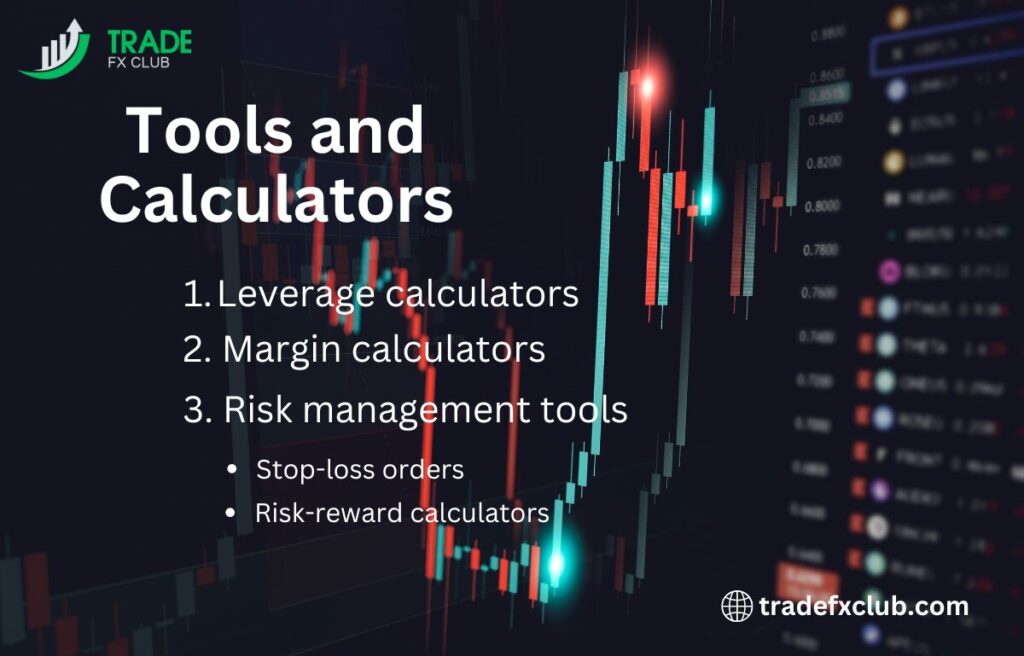
Margin calculators are another critical tool, providing insights into the amount of margin required to open and maintain positions. By understanding their margin requirements, traders can better manage their exposure and avoid margin calls. Additionally, risk management tools integrated into trading platforms, such as stop-loss orders and risk-reward calculators, assist traders in setting appropriate risk levels and maintaining control over their trading strategies. Keeping a trade journal also helps traders track their leverage usage and outcomes, facilitating performance analysis and strategy adjustments.
How Do Price Movements Impact Trades with High Leverage?
Price movements can have a profound impact on trades that use high leverage, amplifying both potential gains and losses. With high leverage, a small change in the price of a currency pair can lead to significant changes in the value of a trader’s position. For instance, if a trader uses 100:1 leverage and the market moves against their position by just 1%, they could face a 100% loss on their invested capital. This magnification effect means that while high leverage can potentially enhance profits, it also increases the risk of substantial losses, making the trader’s position highly vulnerable to market fluctuations.
Moreover, high leverage increases the likelihood of margin calls, where the trader must deposit additional funds to maintain their position. A minor adverse price movement can quickly erode a trader’s margin, leading to forced liquidation of their positions if they cannot meet the margin requirements. This risk of margin calls means that traders must closely monitor market movements and manage their positions carefully to avoid the potential for significant financial losses.
What Role Does Experience Play in Choosing the Right Leverage?
Experience plays a critical role in selecting the appropriate level of leverage for trading. Experienced traders have a deeper understanding of market dynamics and are better equipped to manage the risks associated with high leverage. They know how to interpret market signals, predict price movements, and implement effective risk management strategies. This experience enables them to make more informed decisions about how much leverage to use, balancing the potential for profit with the risks involved.
In contrast, less experienced traders may struggle to manage the complexities and risks associated with high leverage. They might overestimate their ability to handle market volatility, leading to excessive risk-taking and potentially substantial losses. For beginners, it is often advisable to use lower leverage until they gain more experience and confidence in their trading strategies. By starting with lower leverage, traders can learn to navigate the market more effectively and build the skills necessary for using higher leverage safely in the future.
In conclusion, leverage in forex trading is a powerful tool that allows traders to amplify their trading positions and potentially increase their returns. By using leverage, traders can control larger amounts of currency pairs with a relatively small initial investment, which can lead to significant gains if the market moves in their favor. However, this same leverage also magnifies potential losses, making it a double-edged sword. The ability to leverage trades means that a small change in the market can result in substantial financial outcomes, highlighting the importance of using leverage judiciously.
To navigate the challenges of leverage effectively, traders must adopt rigorous risk management practices and remain vigilant about market conditions. Setting appropriate leverage levels, employing stop-loss orders, and avoiding over-leveraging are critical strategies to manage risk and protect capital. Understanding the mechanics of leverage and its potential impact on trading outcomes is essential for making informed decisions. By maintaining a balanced approach and employing sound risk management techniques, traders can harness the benefits of leverage while mitigating its inherent risks, ultimately enhancing their prospects for long-term success in the forex market.

